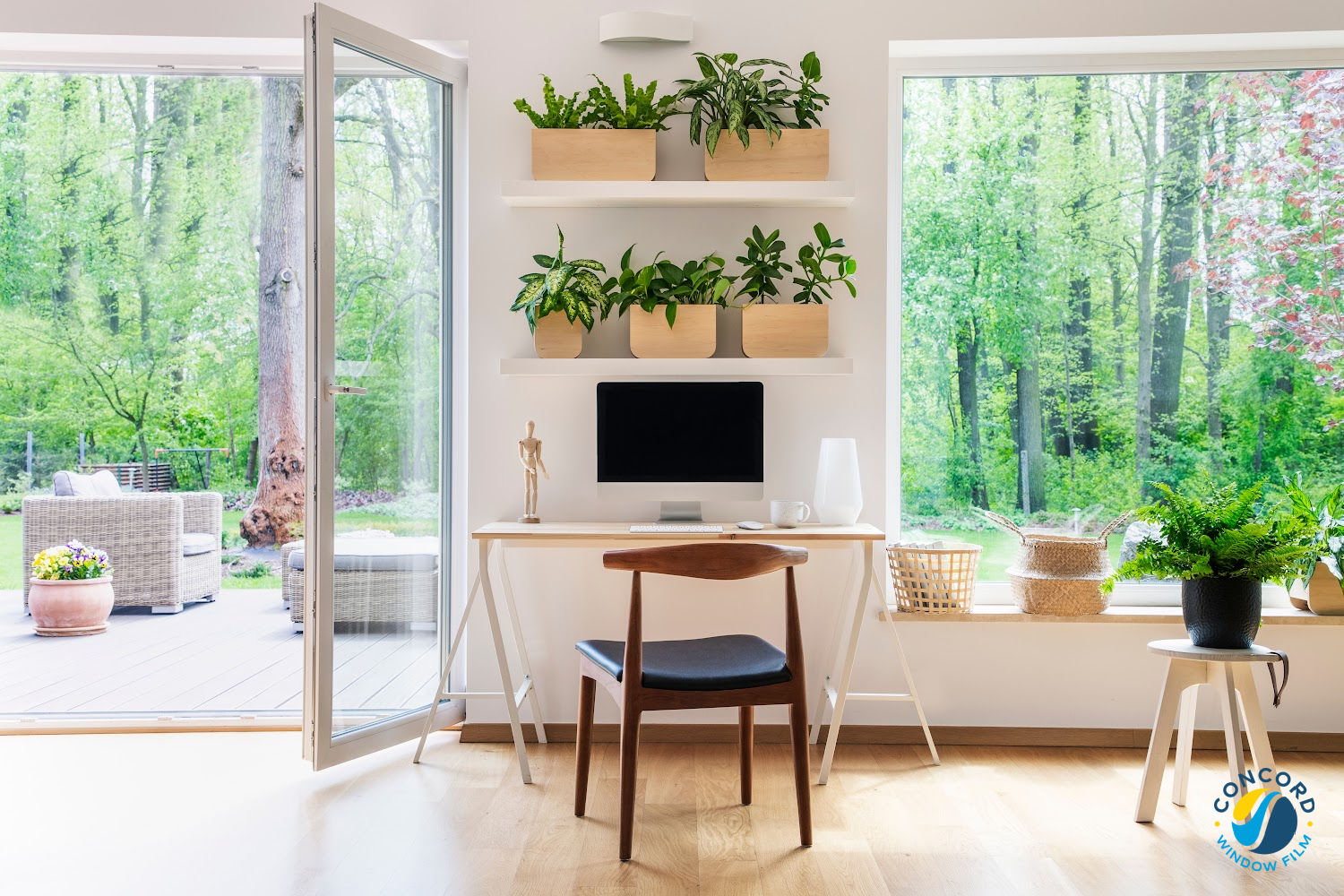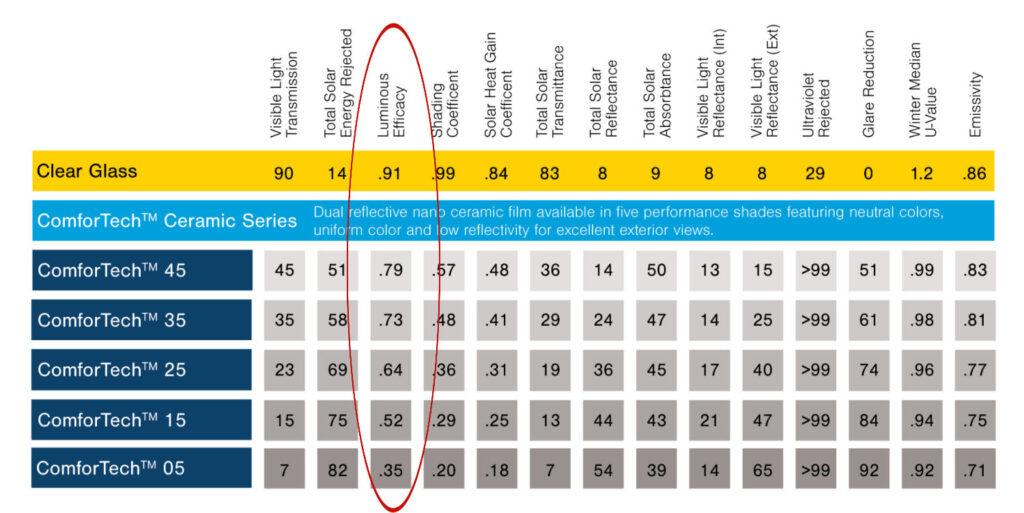
FREE SHIPPING ON PRECUT KIT ORDERS OF $100 OR MORE

When choosing window film for your home, you may have come across the term “luminous efficacy.” While it may sound like a complex scientific concept, understanding luminous efficacy is crucial when selecting the right window film for your residential needs. In this blog post, we will explore what luminous efficacy is, what it measures, and how it relates to residential window film, ultimately helping you make an informed decision when investing in window treatments.
In general, according to the Power Electronics Handbook, luminous efficacy (LE) is a measure of how effectively a light source produces visible light from the energy it consumes. It is expressed in lumens per watt (lm/W) and indicates the efficiency of a lighting system in converting electrical energy into visible light. In simpler terms, LE tells you how much light you get for each watt of power used.
The window film industry uses LE in a slightly different way since window film is not a light source. LE for window film is the ratio of daylight transmission to solar heat transmission that passes through a glazing system. This is determined by dividing the visible light transmission of the film by the shading coefficient. LE is a measurement of a film’s efficiency. The higher the number, the better.
Below is the chart showing ComforTech™ Ceramic Series window film’s luminous efficacy numbers:

Luminous efficacy measures the efficiency of a light source, which directly impacts energy consumption and overall energy costs. A higher luminous efficacy value means that the light source is more efficient at converting energy into visible light, ultimately leading to lower energy consumption and reduced energy bills.
With regards to window film, LE also measures efficiency – but the efficiency of the film. And in this case, it isn’t about converting energy, but about blocking heat. So, the better the film is at blocking heat while still letting in visible light, the higher the film’s luminous efficacy.
When comparing different lighting systems or window films, it is essential to consider their LE, as it plays a crucial role in energy efficiency and aesthetics.
Window films are designed to improve the energy efficiency of a home by reducing solar heat gain and insulating the windows. Luminous efficacy is a significant factor when considering residential window film options for several reasons:
Window films with higher LE are more efficient at transmitting visible light while rejecting solar heat. This means that these films allow more natural light into your home without significantly increasing the interior temperature. As a result, you can reduce your reliance on artificial lighting and air conditioning, ultimately saving energy and lowering your utility bills.
A window film with high luminous efficacy can improve the visual comfort of a room by allowing more natural light to enter while minimizing glare. This creates a more pleasant environment inside the home, reducing eye strain and enhancing the overall ambiance.
High-quality window films with excellent LE can maintain the appearance of your windows without compromising their energy efficiency. This means you can enjoy the benefits of increased energy efficiency without sacrificing the look and feel of your home.
In summary, luminous efficacy is an essential factor to consider when selecting residential window film. By understanding the concept of LE and its role in energy efficiency, you can make an informed decision and choose the best window film to suit your needs. Remember to compare the LE values of different window films, keeping in mind that a higher value indicates better performance in terms of energy efficiency, visual comfort, and aesthetics.